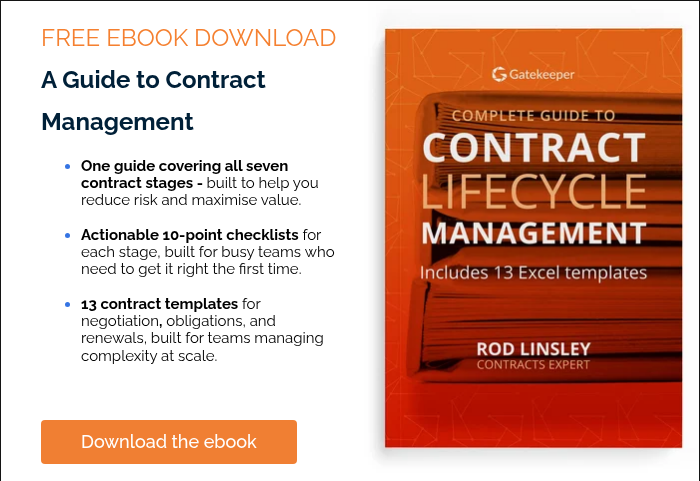Why Must CFOs Own Data Unification?
Legal owns contracts. Procurement manages suppliers. Risk runs compliance.Yet only the CFO is accountable for the financial consequences when those processes fail to connect.
Uncontrolled renewals hit the P&L. Non-compliant vendors trigger audit fines. Duplicate suppliers quietly erode margin. None of those line items show up as "legal" or "procurement" failures. They show up as reduced EBITDA.
The CFO sits at the intersection of all three domains. They're the only executive who has both the mandate and the data lens to connect them. In fact, 76% of CFOs now own or co-own an enterprise data and analytics strategy.
The COO oversees operations with a focus on delivery and efficiency. The Chief Data Officer integrates systems without owning commercial outcomes. Meanwhile, it is the CFO who is uniquely positioned to turn fragmented operational data into financial intelligence. To make risk, contract, and spend data speak the same language: profit.
If CFOs don't unify those disconnected processes, no one else will. The cost of inaction lands squarely on the balance sheet.
What are The Three Roles CFOs Must Play in 2026?
In the Q4 2025 CFO Report, Gartner identifies three distinct roles CFOs must play to avoid that 80% failure rate. Each requires collaboration with the chief data and analytics officer and other technology leaders.
Role 1: Data Visionary
CFOs typically define enterprise data vision at a high level. Vision alone isn't enough. You need to delve into execution details to make it real.
This means balancing strategic thinking with practical implementation. You're connecting data initiatives to real business outcomes, not just approving analytics investments.
Role 2: Enterprise Data Enabler
This role is about facilitating critical decisions on technology investments and funding. The questions any CFO should ask themselves include:
- What barriers are hindering data-driven business value?
- How do we best resource, govern, and prioritise data and analytics teams for impact?
You're not just allocating budget. You're removing obstacles that prevent teams from turning data into value.
Role 3: Business Partner
Here, CFOs clarify data and analytics roles and responsibilities across the organisation. Critical questions include:
- Who owns each aspect of our data, and where are the gaps?
- How do I break down silos and maintain enterprise-wide alignment?
You're identifying where processes break down and developing strategies to connect Legal, Procurement, and Finance without losing control.
These aren't abstract concepts. They're practical questions with financial consequences. CFOs who execute all three roles simultaneously transform data from cost centre to a strategic asset.
How does Gatekeeper help CFOs to Turn Data Into Financial Control?
Gatekeeper is the only platform that unifies third-party risk checks, full contract lifecycle management, and ongoing compliance through a single source of truth. This isn’t about loosely connecting a few systems. It’s about building an intelligent control layer for CFOs.
Our LuminIQ AI engine continuously monitors vendor data, contracts, and compliance obligations in real time. It identifies risks early, flags renewal and negotiation opportunities, and automates routine workflows that often drain Finance teams.
Instead of reacting after the fact, CFOs gain continuous visibility and decision support that keeps financial exposure under control.
By embedding AI-driven oversight into every stage of the contract and third party lifecycle, Gatekeeper transforms scattered data into actionable intelligence. For CFOs, that means stronger risk management, better cost discipline, and a clear line of sight from operational detail to strategic financial outcomes.
1. Gain Total Visibility Over Spend
CFOs can’t control what they can’t see. With a unified data layer, every vendor, contract, and cost signal is captured in one place.
No more chasing Legal’s files, Finance’s ERP outputs, or Risk’s spreadsheets.
Instead, CFOs gain a real-time, enterprise-wide view of third-party exposure, enabling them to anticipate risks and make informed decisions before costs escalate.
2. Turn Automation Into Control
Financial control requires consistency and precision. By deploying LuminIQ AI agents, CFOs close compliance gaps and take repetitive, high-risk tasks off the table - onboarding, renewals, and even negotiations run on autopilot.
This automation reduces error, enforces policy, and frees teams to focus on strategy. The outcome: stronger controls, less leakage, and more capacity to drive enterprise value.
3. Aligning the Enterprise Around One Truth
Financial control also depends on alignment across functions. When Legal, Procurement, and Finance all work from the same live dataset, silos disappear.
Renewal dates can’t be overlooked. Compliance status isn’t hidden. Everyone sees exposure before it impacts the bottom line.
The data itself enforces accountability, clarifies roles, and ensures decisions support both financial resilience and growth.
Conclusion
Finance leaders who unify visibility across vendors, contracts, and spend gain the power to control outcomes, not just report on them. By consolidating fragmented data into a single source of truth, they can stop uncontrolled renewals, uncover hidden savings opportunities worth six figures or more, and walk into board meetings confident their numbers will stand up to scrutiny.
True financial control is forward-looking. It means acting on live data to protect profitability, improve resilience, and demonstrate leadership through insight. With this level of visibility, CFOs don’t wait for problems to appear in monthly reports - they prevent them from happening in the first place.
Frequently Asked Questions
Why do 80% of analytics investments fail?
They fail because organisations treat data governance as a compliance checkbox rather than an execution priority. CFOs approve budgets without driving the operational changes needed to connect fragmented data across Legal, Finance, and Procurement.
What makes the CFO the right person to own data unification?
The CFO is accountable for financial outcomes. When siloed data causes problems like uncontrolled renewals or non-compliant vendors, those issues show up as reduced EBITDA on the CFO's balance sheet. No other executive has both the mandate and the financial lens to connect operational data across departments.
What is a Data Visionary role for CFOs?
As a Data Visionary, CFOs balance high-level strategic thinking with practical execution details. You're not just setting data strategy. You're ensuring that analytics investments connect to measurable business outcomes and that execution details get the attention they need.
How does the Enterprise Data Enabler role work?
This role focuses on making critical technology investment decisions and removing barriers to data-driven value. CFOs ask: What's blocking our teams from turning data into value? How do we resource and govern analytics teams for maximum impact?
What does the Business Partner role require from CFOs?
As a Business Partner, CFOs clarify who owns what data across the organisation, identify gaps where processes break down, and develop strategies to break silos while maintaining enterprise alignment. You're connecting departments through shared data visibility.
How do unified platforms like Gatekeeper prevent silent renewals?
Unified platforms connect contract data from Legal, spend data from Finance, and compliance data from Risk in one system. When a renewal date approaches, the platform surfaces it automatically with full context: current spend, compliance status, and usage data. Finance sees the exposure before the renewal hits.


.png)
.png)
.png)
-4.png)